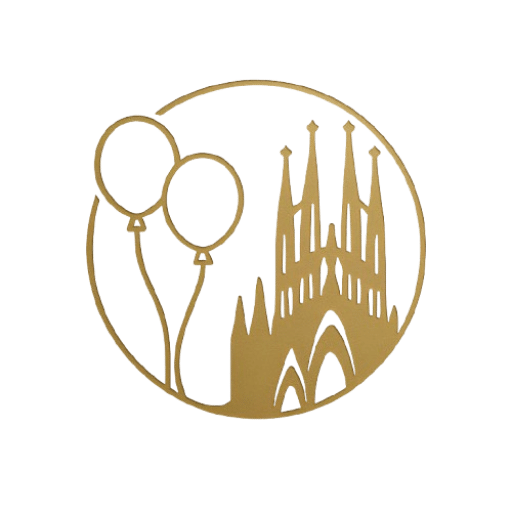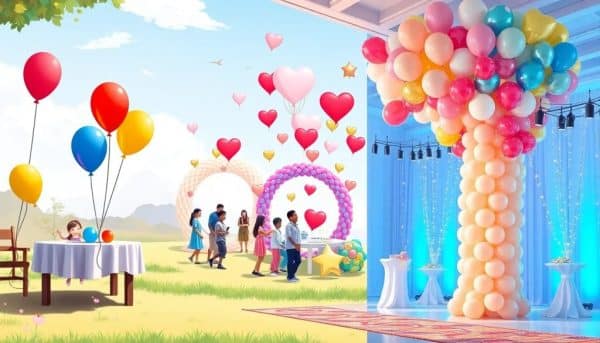- The history of balloons: from playthings of kings to modern marvels
- The fascinating history of balloon modeling art
- What is the history of balloon decoration?
- How did balloon art evolve over time?
- What are the modern trends in balloon decoration?
- Who are the pioneers of balloon art?
- What cultural significance do balloons hold?
- How can you elevate events with balloon decoration?
- Related questions about balloon decoration history
Balloon decoration has a rich history that has transformed from simple, playful designs to spectacular artistic expressions. This evolution reflects the creativity and innovation of various artists and cultures throughout time. In this article, we will explore the history of balloon decoration: from simple to spectacular, examining its origins, significant milestones, and modern trends.
From royal celebrations to contemporary events, balloons have played a vital role in our social fabric. By tracing the evolution of balloon art and its impact on celebrations, we can appreciate how these colorful creations have influenced festivities across the globe.
The history of balloons: from playthings of kings to modern marvels
Balloons have a fascinating backstory that dates back centuries. The earliest balloons were made from animal bladders and intestines, used mainly for entertainment and scientific purposes. Leonardo da Vinci conceptualized balloon flight, and this curiosity paved the way for further exploration.
In 1783, the Montgolfier brothers launched the first hot air balloon, which marked a significant milestone in balloon history. This achievement led to public displays and the popularization of ballooning as a spectacle, captivating audiences everywhere.
With the invention of rubber balloons by Michael Faraday in 1824, balloon decoration began to flourish. These modern materials allowed for a newfound creativity in balloon designs, paving the way for the artistic expression we see today.
The fascinating history of balloon modeling art
Balloon modeling, or balloon twisting, transformed the art of balloon decoration into an intricate craft. This technique involves shaping and twisting balloons into various forms, from simple animals to elaborate sculptures. Samuel Sarmiento and other pioneers have played a crucial role in developing these techniques, elevating balloon art to new heights.
Today, balloon modeling is not only a popular entertainment option for children's parties but also a recognized art form. Artists now use advanced techniques that blend traditional methods with modern innovations, creating stunning balloon installations that capture the imagination.
The global appeal of balloon modeling is evident in competitions and festivals dedicated to the art, allowing artists to showcase their talents and creativity. These events have become a platform for sharing techniques and inspiring future generations of balloon artists.
What is the history of balloon decoration?
Historically, balloon decoration has played a crucial role in various celebrations, signifying joy and festivity. The earliest uses of balloons in decoration can be traced back to royal events where they symbolized grandeur and celebration.
As the craft evolved, decorators began using balloons for various occasions, from birthday parties to weddings, creating eye-catching displays that enhance the ambiance. The vibrant colors and shapes of balloons have made them a staple in festive decor.
In recent years, the emergence of eco-friendly balloons has added a new layer to the significance of balloon decoration. Sustainability is now a priority for many decorators, impacting the materials used and the messages conveyed through their art.
How did balloon art evolve over time?
The evolution of balloon art can be traced through significant innovations and cultural influences. Initially, balloons were simple decorative items, but with advances in materials and techniques, they have transformed into complex designs and structures.
In the 20th century, the introduction of balloon twisting techniques allowed artists to create intricate sculptures, further expanding the creative possibilities of balloon art. Innovations in balloon decoration techniques and materials have continually pushed the boundaries of what can be achieved.
Modern balloon artists often incorporate elements from other artistic disciplines, such as painting and sculpture, leading to breathtaking installations that tell a story or convey a message. This fusion of art forms exemplifies how balloon art is constantly evolving.
What are the modern trends in balloon decoration?
- Use of eco-friendly balloons that promote sustainability
- Incorporation of LED lights for stunning displays
- Large-scale installations for events and festivals
- Personalized designs that reflect individual styles and themes
- Interactive balloon art, engaging guests in the creative process
Modern trends in balloon decoration are heavily influenced by the desire for unique and memorable experiences. Event planners now seek innovative ways to incorporate balloons into their designs, leading to a rise in large-scale installations that serve as stunning backdrops for photos.
Furthermore, the integration of technology, such as lighting and interactive elements, has made balloon decoration more dynamic. These trends not only enhance the visual appeal but also create engaging experiences for attendees.
Who are the pioneers of balloon art?
Throughout history, several key figures have pioneered the art of balloon decoration, each contributing to its growth and evolution. Madame Thible was one of the first female aeronauts, captivating audiences in the 18th century with her hot air balloon displays, bridging the gap between ballooning and artistic performance.
Another important figure is Jeff Koons, a contemporary artist known for his balloon-inspired sculptures that challenge traditional perceptions of art. His work has helped bring balloon art into the realm of fine art, showcasing its potential as a serious artistic medium.
As balloon art continues to evolve, new artists emerge, pushing the boundaries and inspiring future generations. These pioneers have laid the foundation for the vibrant world of balloon decoration we see today.
What cultural significance do balloons hold?
Balloons hold a rich cultural significance across the globe, symbolizing joy, celebration, and togetherness. Their presence in various events, from weddings to festivals, highlights their ability to bring people together and create unforgettable memories.
In many cultures, balloons are associated with special occasions, representing hope and happiness. Their vibrant colors evoke feelings of joy and excitement, making them a perfect choice for celebrations.
Moreover, the use of balloons in public demonstrations and art installations can carry deeper meanings, advocating for causes and sparking conversations around important social issues. This adaptability showcases the cultural relevance of balloons in modern society.
How can you elevate events with balloon decoration?
To elevate an event with balloon decoration, it’s essential to incorporate unique designs that reflect the theme and tone of the occasion. Consider using large balloon installations or intricate centerpieces to create a focal point that captures guests' attention.
Additionally, integrating other elements, such as floral arrangements or lighting, can enhance the overall ambiance. Artistic balloon installations can transform any venue, making it more visually appealing and memorable.
Engaging professional balloon artists can further elevate the experience, as they bring expertise and creativity to the table. Their ability to craft tailored designs ensures that every detail aligns with the event's vision.
What is the history of the balloon?
The history of the balloon can be traced back to ancient times, where early balloons were made from natural materials like animal bladders. The transition to rubber balloons in the 19th century marked a pivotal moment, expanding their use and creativity.
What is the history of observation balloons?
Observation balloons were first used in the 18th century for military reconnaissance. These balloons allowed for aerial views of battlegrounds, significantly influencing warfare tactics and strategies.
What is the meaning of balloon decoration?
Balloon decoration symbolizes celebration and joy. It enhances the atmosphere of special occasions, creating visual appeal and excitement, reflecting the festive spirit of events.
Where did balloon art originate?
Balloon art has its origins in various cultures, with early forms seen in Europe and Asia. The craft evolved over time, influenced by cultural practices and artistic movements, leading to the diverse styles we see today.
Please note that all prices displayed on this website are for reference only. Final pricing may vary depending on the specific decoration requirements, materials, and event details. Contact us for a personalized quote tailored to your unique celebration!



Deja una respuesta